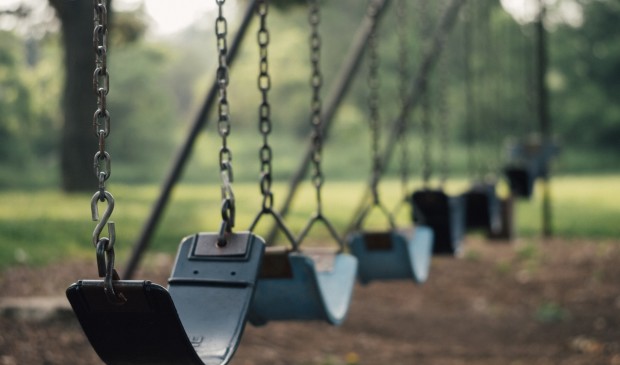Playground talk sparks district conflict
Monday, December 7, 2015 by
Jack Craver Parks advocates appear united in their belief that the city needs to spend more money to provide green spaces and playgrounds for kids, but precisely where it should invest limited resources is a source of contention.
At a meeting of the Open Space, Environment and Sustainability Committee on Thursday, Parks and Recreation Department staff unveiled a list of proposed park improvements that it recommended undertaking with a $1.15 million block grant recently approved in the city budget. It identified 17 parks across the city that would be worthy candidates for new or improved playgrounds. All of the candidate parks were classified, based on a number of criteria, as “poor” – one step above “failing.”
Instead of featuring the brightly colored plastic and metal contraptions that most of us grew up playing on, the playgrounds of the future will have nature-themed objects that more closely blend in with surrounding wilderness.
“It engages kids with the outdoors, and it helps break down barriers that folks, particularly children, may have in terms of their relationship with nature,” said Parks and Recreation Department Assistant Director Marty Stump.
City Council Member Sheri Gallo, who does not sit on the committee but was attending the meeting, lauded the geographic diversity of the proposed repairs. Every Council district was slated to get at least one park improvement, she pointed out. It was in keeping with the “10-1 way of government,” she said.
But in occasionally emotional testimony, members of the community advocacy group Go! Austin/Vamos! Austin (also known as GAVA) urged committee members to devote more resources to what they described as the neighborhoods in greatest need. The coalition is focused on two ZIP codes – 78744 and 78745 – that include parts of Council districts 2, 3 and 5.
Those parts of the city have a higher need for park investment now because they have not gotten a fair share of the city parkland in recent years. According to GAVA, although the two ZIP codes are home to 11.65 percent of Austin’s population, they have received only 6.25 percent of PARD capital improvement projects since 2006. Moreover, PARD’s list of 17 parks that are candidates for improvements include only two from the area.
Alba Sereno, GAVA community director for 78745, told the committee that a recent study had revealed alarmingly high rates of child obesity in Southeast Austin, a health crisis that she said demands action from the city. “It’s a situation created from a historic marginalization and underservedness,” she said.
GAVA’s proposals, said Sereno, were the result of three years of community dialogue. During that time, group leaders and volunteers surveyed neighborhood residents on their needs and have held monthly community meetings.
“We hope that you will find that through their work of coming together, being organized, talking to each other, coming to consensus, they add value to the process of master planning,” she said.
Stump expressed appreciation for GAVA’s advocacy, saying he couldn’t argue against most of the group’s proposals, even if they differed from those floated by the department.
Council Member Delia Garza, the committee vice chair, said the conflict over how to use the block grant funding was what she had feared when the grant was first proposed during the budget process. The original intent of the grant, which was proposed by Council Member Leslie Pool, was to target GAVA areas specifically.
She proposed that PARD staff come up with a number of alternatives for the committee to examine to determine how the money could be split between the priorities identified by the department and those highlighted by GAVA. Her motion passed, 2-0-1, with Mayor Pro Tem Kathie Tovo in support and Council Member Don Zimmerman abstaining.
Zimmerman suggested that money for parks be divvied among Council districts and that Council members be allowed to determine how the money in their districts is spent. “Why isn’t that decision-making with the elected Council members?” he asked. “I don’t understand the objection to letting us do that.”
Tovo pushed back, saying that Council members have to strike a balance between advocating for their districts and looking after the city as a whole.
“I don’t think our charter really supports a system where each Council office has a certain amount of money to spend on roads projects or parks projects or other things,” she said. “Sometimes the needs are going to be greater in one area than another, and sometimes the uses are going to be more prevalent in one area than another.”
You're a community leader
And we’re honored you look to us for serious, in-depth news. You know a strong community needs local and dedicated watchdog reporting. We’re here for you and that won’t change. Now will you take the powerful next step and support our nonprofit news organization?




